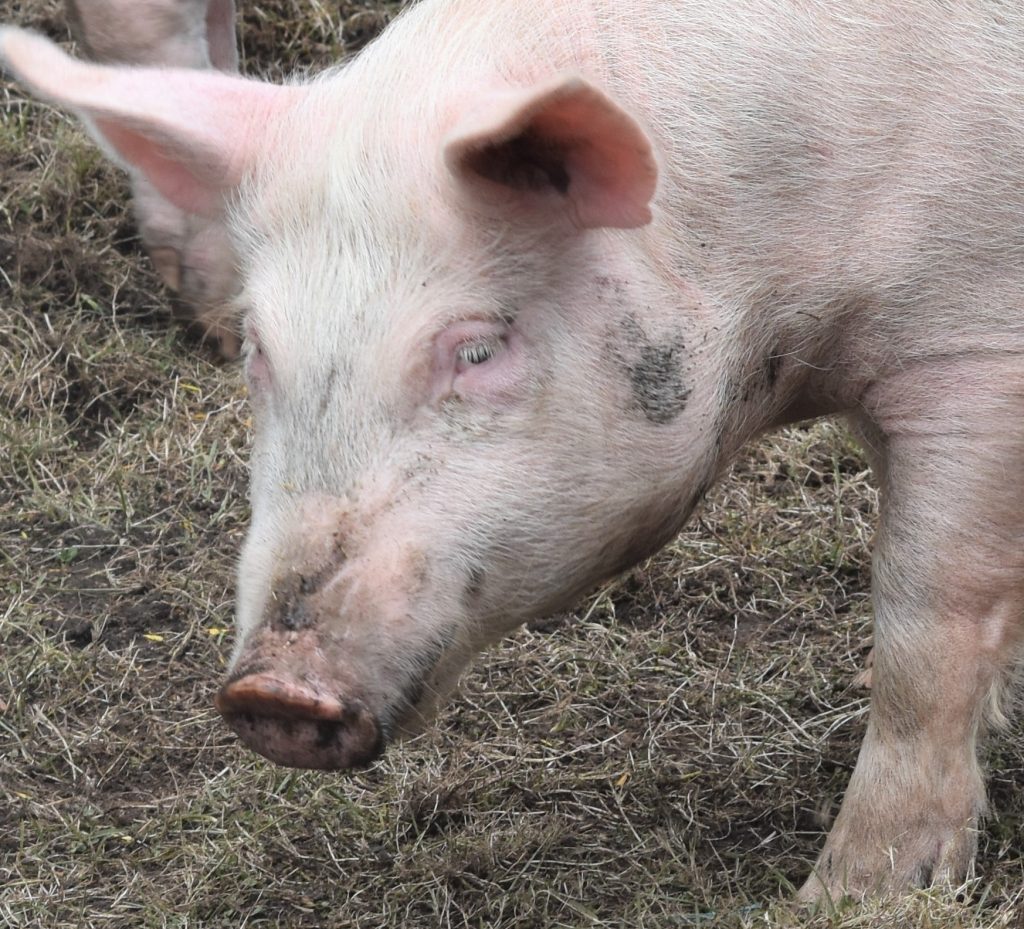Cows understand ‘Cow’, Pigs understand ‘Pig’
Posted on July 4, 2022

End Animal Slaughter editor Sandra Kyle states the obvious: Animals understand what others of their species are saying to them. And just as with us, some are artists!
I do regular slaughterhouse vigils locally here in Whanganui, New Zealand. Like most other people, I find them hard, and in the nearly eight years I’ve been doing them it hasn’t got one jot easier.
Yesterday at one of the slaughterhouses, that kills cows and pigs, I witnessed and recorded the sad bellowing, lowing, and mooing of 100 or so cows trapped in holding pens. What I understood was that the animals were communicating their distress and frustration. But to the other cows their communications had specific means. The reason for this, to state, the obvious, is ‘Cows understand Cow.’
And of course Pigs also understand ‘Pig’. I witnessed as a truckload arrived under the cover of darkness, and their screams can clearly be heard on my video. Researchers have found that these smart animals have plenty to say, and that in their squeals, grunts and oinks there are significant codes. In an outdoor setting these codes may mean asking and telling other pigs where they are, or where food sources can be located, or to signal where there’s danger, to name just a few. The screams I hear at the slaughterhouse as the pigs are forced off the truck into pens are no doubt alerts, warnings, angry or fearful responses – and possibly even reassurances. ‘It’ll be OK guys, let’s just stick together.’
Pigs are so similar to us physiologically that we can have their hearts, albeit modified, transplanted inside our body. It breaks my own heart that up to 60% of pigs in my country, New Zealand, are forced to live their lives in smelly indoor hovels, standing in their own sh^t, without any bedding or stimulation to be found in their tiny, barren, concrete pens for the duration of their short, abused lives. Mother pigs have the worst lives of all, confined here and all over the world in sow crates and farrowing crates where they cannot even turn around, and are helpless to go to the assistance of a sick baby, or to build a nest for them.
I have seen this nest-building instinct for myself. A few months ago I rescued three pigs from slaughter, and kept them on my property until they could be rehomed. Although it was summer, the weather can suddenly turn bad. One day black clouds rolled over ahead and it began to bucket down. I ran out to see what I could do, and observed Hope, the only female, going to where I had put hay bales, and starting to pull them apart. When my three piggies started to burrow into the hay I realised Hope had built a shelter from the rain for her and her brothers.
Male pigs also build nests. A friend who lives in Victoria, Australia, tells me that his Sunny Boy spends hours crawling through junk to collect objects for his nest, and ‘goes nuts’ at his humans if they try to touch it. I guess that’s the artistic temperament! Gary told me that his nest is 100% Sunny’s artwork, with the treasures he has found deliberately placed in various juxtapositions around where he lies. Gary has seen him carefully contemplating what’s worthy of his art installation, and the decision is never easy. Life choices and self expression are important to Sunny, according to Gary, and are his biggest traits. Sometimes Sunny builds a ‘wall’ in front of him when he is sleeping, a way to keep him safe while he snoozes. Obviously he has nothing to fear, but an animal’s instincts are strong.
I will continue doing my vigils until every slaughterhouse in my country has closed down for good. This will only happen when people stop paying farmers and slaughterhouse workers to do their work. I will continue until these consumers make the decision to adopt a healthy, sustainable, compassionate vegan diet.
Good luck to me.
The feature photo is of Hope. The photo below is of the Gary’s artistic Sunny Boy.

← NEXT
PREVIOUS →

